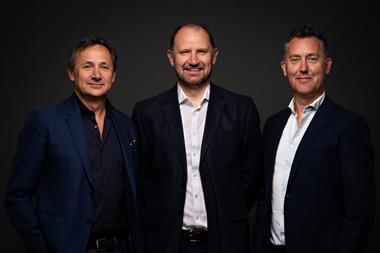The pandemic caused ‘a lot of sacred cows’ to be ‘killed’ as digital trumped in-person interactions, but are insurtechs really at the cutting edge of technology, or simply helping insurance catch up to more digitally savvy sectors?
By Editor Katie Scott
We’ve all heard the reports of how the Covid-19 pandemic hugely accelerated the implementation and adoption of technology at a whole host of different businesses, including many insurance firms.
Research published by software development company Endava in May 2022, for example, found that 84% of 1,000 senior IT decision-makers believed that technology adoption during the pandemic fast-forwarded digital programmes by as much as 10 years.

A key component of this movement has been the burgeoning world of insurtech – market research firm Technavio reported in February 2022 that the insurtech market in the UK is predicted to grow by $4.2bn (£3.4bn) between 2021 and 2026.
However, panellists speaking at Insurance Times´ BrokerFest 2022 conference last week (16 June 2022) emphasised that much of this pandemic-driven, insurtech led digital acceleration is simply the insurance market catching up with other tech savvy business sectors, rather than showcasing pure, fresh innovation.
Within corporate and specialty lines in particular, “a lot of sacred cows have been killed” in terms of the switch from “face-to-face and in-person” to more digital methods and operations, observed Greg Brown, partner at business management consultancy Oxbow Partners.
“Is that innovation or catching up with the rest of the world in terms of realising that digital is a thing that is here to stay? I’d argue that it is catching up rather than innovation, but it has changed a lot,” he said.
Fellow panellist Nyasha Kuwana, head of product at commercial parametric flood cover MGA FloodFlash, agreed with Brown’s sentiment.
She added: “[The industry has played] catch up – wire transfers were a thing back in 2007, just the insurance industry was resisting them for whatever reason.
“When the pandemic came, some companies realised that you could work differently, you could have your staff remote, you could do certain surveys or adjustments through video.
“It was a moment that helped [the industry] rise to the challenge, but I wouldn’t call it innovation.”
Although the insurance market may be racing to catch up with other technologically driven sectors, such as banking, Todd Zino, chief product and technology officer at pay-per-mile business By Miles, emphasised that changed lifestyles as a result of the pandemic is still a key opportunity for insurance and insurtech businesses.
For example, the patterns of how individuals use their homes and vehicles and where they spend their time has changed - “for some segments, permanently” – impacting a multitude of industries.
“I would hope that the [insurance] industry is catching up and it is adapting anyway,” Zino said.
“You would hope that the agility of organisations is continually evolving, but the opportunity has sped up because lifestyles have changed and there’s a massive disruption as a result of that.

“Even if Covid went away tomorrow, I don’t think those lifestyle changes are going to go back [to how they were before] 2020.
“That’s a massive customer proposition and how you think about choosing your home, auto insurance based on this new lifestyle. We’ve certainly seen opportunities there.”
Creativity and consolidation
For Brown, the insurtech market is currently undergoing a “cycle of creativity and then consolidation”, where innovation and shiny new solutions perhaps aren’t firms’ primary ambition.
For example, he noted a drop in peer-to-peer insurance models and added that parametric insurance has been around for an incredibly long time – despite the fact these types of policies have only recently attracted broader industry recognition and greater customer awareness.
He explained: “We’re in a position now, rather than me listing out lots of cool, new stuff that’s happening, I would describe it as [a] business model innovation consolidation period - partly driven by capital, in terms of people saying you know what, this 150% combined ratio you’ve been delivering me for four years, I wouldn’t mind if that headed south of 100% because I can put my capital elsewhere and the market is tightening.
“You go through these cycles of creativity and then consolidation and I think we’re seeing a lot of that at the moment. Some [insurtechs] have dropped out, like peer-to-peer insurance – there’s only a few.
“It’s much more people saying ‘how do I make this work?’”
Zino added that improved and increased data has also changed insurtechs’ business models, although he did distinguish the difference between an insurtech firm and a neoinsurer.
For him, a neoinsurer provides novel solutions to compete with incumbent firms, while insurtechs tend to be broader in what they can offer.
As a term, ‘insurtech’ has less “clout” with private equity firms nowadays, Brown agreed.
Throughout the pandemic, as well as since the lifting of lockdown restrictions, it has been a very interesting time for the insurtech market.
Shouting loudly about being at the forefront of technology usage in the insurance sector, these businesses became a natural place to turn to when social distancing hampered historical in-person functions.
Now, however, a lot of firms have snuffed out operational fires caused by the pandemic, which in turn must impact insurtechs’ role in the market and the services they look to provide.
I guess the crunch time will be when – or if – the insurance market catches up with its digitally sophisticated business sector peers. At this point, insurtechs will have to bring something new to the table for the market to continue to flourish as part of the wider insurance ecosystem.












































No comments yet